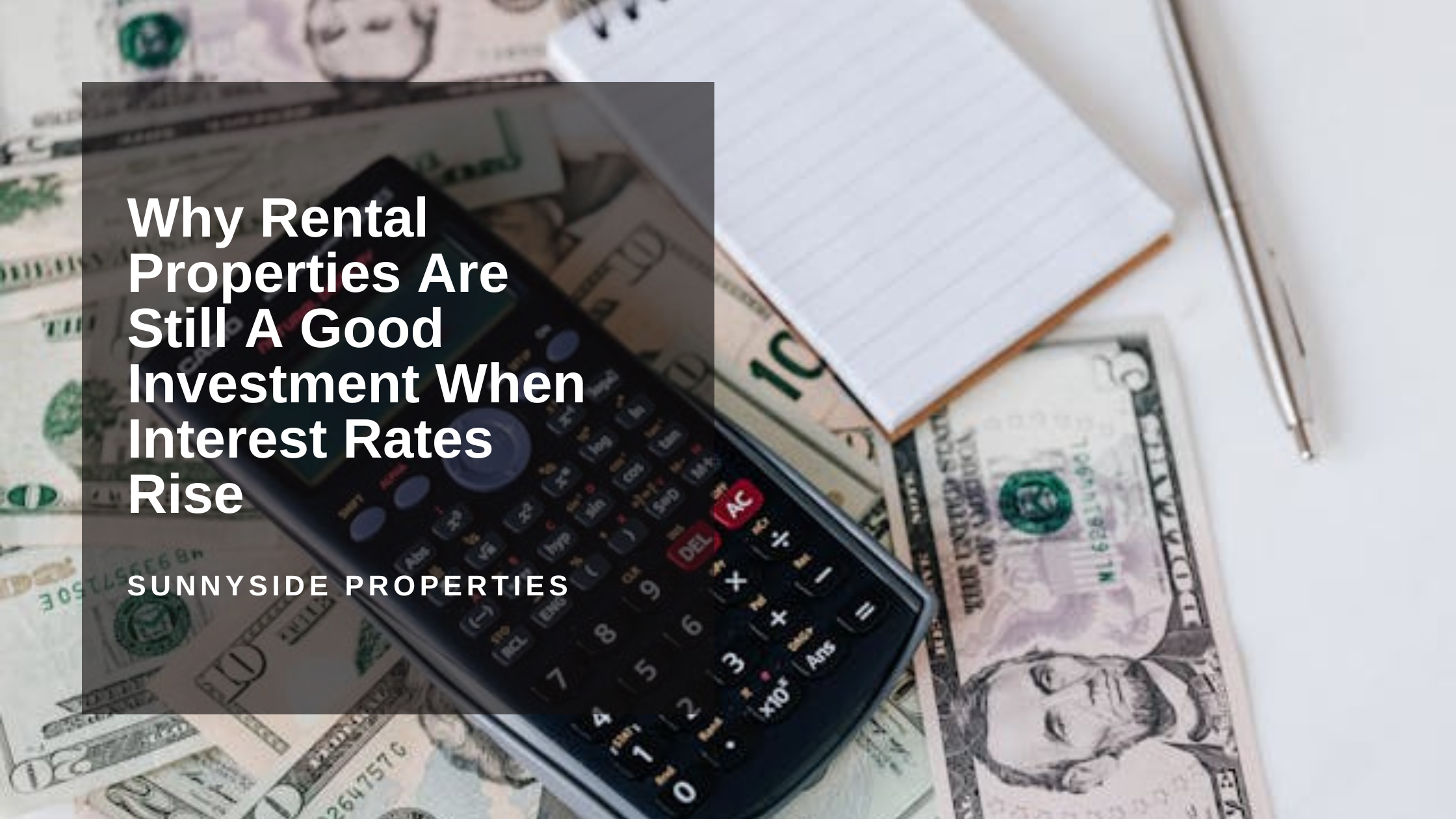Key Takeaways
Taking a long-term approach to rental properties can lead to steady income, appreciation, and lasting wealth.
The strongest rental investments generate income through multiple streams, including cash flow, tax benefits, and inflation protection.
Choosing properties in desirable, high-demand locations is one of the best ways to build long-term value.
With the right strategy, investors can use inflation to their advantage and grow rental income over time.
Real estate markets are always shifting, and today’s high interest rates have left many investors questioning whether now is the right time to buy. But for those taking a long-term approach, rental properties still offer tremendous potential.
While it can be tempting to chase quick profits through short-term strategies like flipping, sustainable wealth in real estate is most often built over years, not months.
Experienced investors understand that the true value of a rental property lies in its ability to generate multiple income streams like cash flow, appreciation, tax benefits, and more, while serving as a hedge against inflation.
The key is knowing how to navigate changing market conditions without losing sight of the bigger picture. That’s where experience matters.
The team at SunnySide Properties has helped countless clients build resilient rental portfolios designed for long-term growth, even in challenging rate environments.
In this blog post, we’ll explore why adopting a patient mindset can pay off and share actionable strategies to help you maximize returns on your next rental investment.
Learn More About SunnySide Properties
Take a Long-Term View on Rental Properties
While some investors pursue short-term profits by flipping homes, buy-and-hold investors are in it for the long game. Short-term strategies like purchasing distressed properties, renovating, and reselling can deliver quick returns, but they come with higher risks and time constraints.

Rental properties, on the other hand, are best viewed as long-term investments. Immediate gains may be modest, but over time, investors benefit from steady appreciation, rising rents, and consistent cash flow.
As property values grow and market demand increases, rental income can be adjusted upward, boosting profitability year after year.
By maintaining a long-term mindset, you avoid short-sighted decisions driven by market fluctuations. This patience ultimately leads to greater stability and wealth accumulation.
Start Building Your Rental Portfolio
The Five Core Income Streams of Rental Properties
To understand how to thrive despite high interest rates, investors must be familiar with the different ways rentals generate income:
Cash flow – The net income remaining after all expenses are paid.
Appreciation – The increase in property value over time.
Tax advantages – Deductions and benefits like depreciation and interest write-offs.
Equity buildup – Equity increases as mortgage payments reduce the loan balance.
Inflation hedge – Fixed mortgage payments remain constant while rents rise with inflation.
Each of these revenue streams carries its own level of risk and potential. The key is to strike the right balance and adapt based on market conditions. For instance, in a high-rate environment, appreciation and inflation protection may offer more value than immediate cash flow.

Location and Demand Are Non-Negotiables
When returns are squeezed by high mortgage payments, choosing the right property becomes even more critical. The best way to offset tighter margins is by selecting assets in high-demand areas.
Properties located near job centers, shopping centers, public transit, and developing infrastructure typically hold their value better and attract steady tenant interest.
Even if rental income is initially lower, properties in strong locations are more likely to appreciate, offering long-term financial rewards.
Do your homework. Investigate local job trends and neighborhood safety ratings before buying. A solid location cushions your investment, even during challenging market conditions.
Benefit from Rising Rents Over Time
As inflation pushes costs upward, rental rates tend to follow. With a fixed-rate mortgage, your loan payments remain constant while your rental income steadily increases. Over time, this difference widens your profit margin and improves your cash flow.
Although expenses like property taxes and insurance may also rise, they typically do so at a slower pace compared to rental income.
As a result, investors with fixed-rate mortgages are well-positioned to benefit from inflation’s upside, using it to their advantage to earn better long-term returns.
Boosting Rental Income and Lowering Expenses
There are several practical strategies that can help investors improve profitability and minimize costs, even when facing high interest payments:
1. Invest in Value-Adding Renovations
Well-planned upgrades can significantly increase rental value and attract quality tenants. Focus on improvements that enhance curb appeal, functionality, and tenant comfort.
Whether it's updating appliances, adding in-unit laundry, or upgrading finishes, strategic renovations can help justify higher rent.

2. Refinance When Rates Drop
Interest rates fluctuate over time. While they may be high now, they won’t remain elevated forever. Keep an eye on market trends and consider refinancing your mortgage when rates dip. This move can reduce your monthly payments and boost your cash flow.
3. Prioritize High-Demand Markets
Instead of chasing deals, buy properties in neighborhoods known for their stability and growth potential. Look for areas with a strong job market, upcoming developments, and population growth. These factors contribute to reliable demand and higher appreciation potential.
4. Watch for Inflation Opportunities
While inflation may raise the cost of goods and services, it also allows landlords to increase rent. With your mortgage payment fixed, your income can grow without a corresponding rise in debt servicing. Over time, this turns inflation into a wealth-building tool.
Understanding the Power of Inflation
Although inflation is often viewed negatively, it can work in your favor as a property investor. With a long-term fixed-rate loan, your monthly mortgage payment stays the same, even as the value of money declines.
Meanwhile, rising rents and appreciation increase your asset’s performance.
Essentially, inflation reduces the real cost of your debt over time. What seemed like a sizable mortgage in today’s dollars may feel relatively insignificant 10 or 20 years from now, especially if your rental income continues to rise.
This is one of the most compelling reasons to lock in a fixed rate while you can, and to keep your investment timeline focused on the long haul.

Bottom Line
High interest rates can seem daunting, but with the right strategy and long-term focus, real estate investors can still achieve strong returns. Understand how rentals build wealth, choose the right markets, and use inflation to your advantage.
Looking to invest in your next rental property? Contact SunnySide Properties today and let our team guide you through every step, from acquisition to long-term success.


.png)